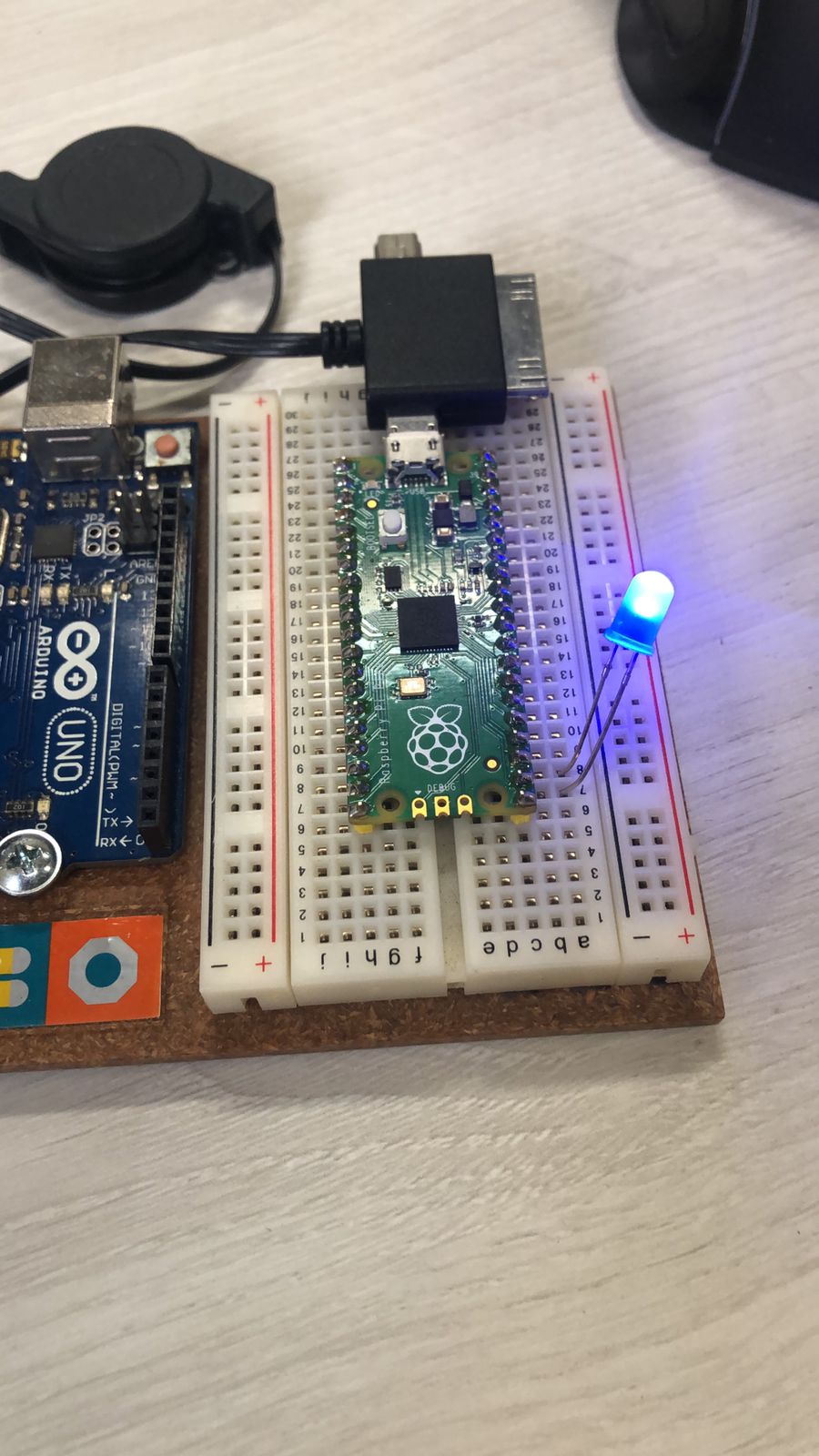Raspberry Pi Pico
The Raspberry Pi Pico series is a range of tiny, fast, and versatile boards built using RP2040, the flagship microcontroller chip designed by Raspberry Pi in the UK, the information that you HAVE TO KNOW. All the information that you have from the Microcontroller its crutial to make actions and take decisions about it, for example, if you do not take some of the features that I mention, probably is not going to work what you been working on.
| Digital Input/Output Pins | Analog Input Pins | Supported input | Microcontroller | SRAM |
|---|---|---|---|---|
| 40 pins and there are 26 programmable GPIOs that you can use to connect peripherals. | 3 | Power 1.8–5.5V DC. | RP2040, chip designed by Raspberry Pi in the UK. | 264kB |
To simulate things for the Pi, I've use Thonny, Wookwi and other free software that I've found, as Fritzing (but actually.. for now I've had giving up with this idea, time management issues)
For simulate the circuit I've also try withFritzing
Those are "free" and "friendly" but... you just can do a part of things in there, comparing with others
Test 1/ THE BLINK: Integrated led // Test 2/ THE BLINK: Resistor + Led

Components
HELLO WORLD - TEST 1
from machine import Pin, Timer
led = Pin(25, Pin.OUT)
timer = Timer()
def blink(timer):
led.toggle()
timer.init(freq=2.5, mode=Timer.PERIODIC, callback=blink)
BLINK PI - TEST 2
void set () {
Serial1.begin (115200);
Serial1.printIn ("Hello, Raspberry Pi Pico!");
}
void loop () {
delay(1);
}
Comments
OMG that microcontroller is hardest than Arduino hahahaa, you have to know that you are going. For example: probably you will need a MicroPhyton (or something like that) to send information to the microcontroller
ALSO if you want to use the Pi Pico whit a Protoboard you need to weld the Multi-pin-conector (they are like legs haaha)
Downloads